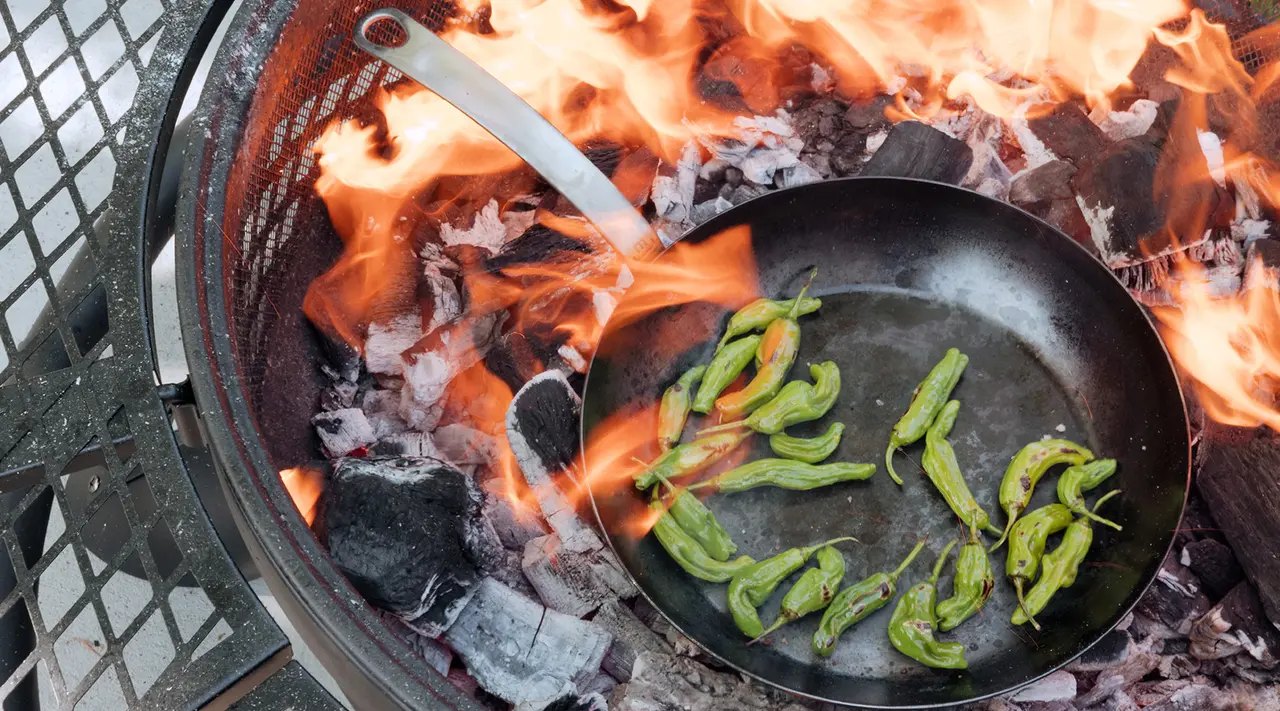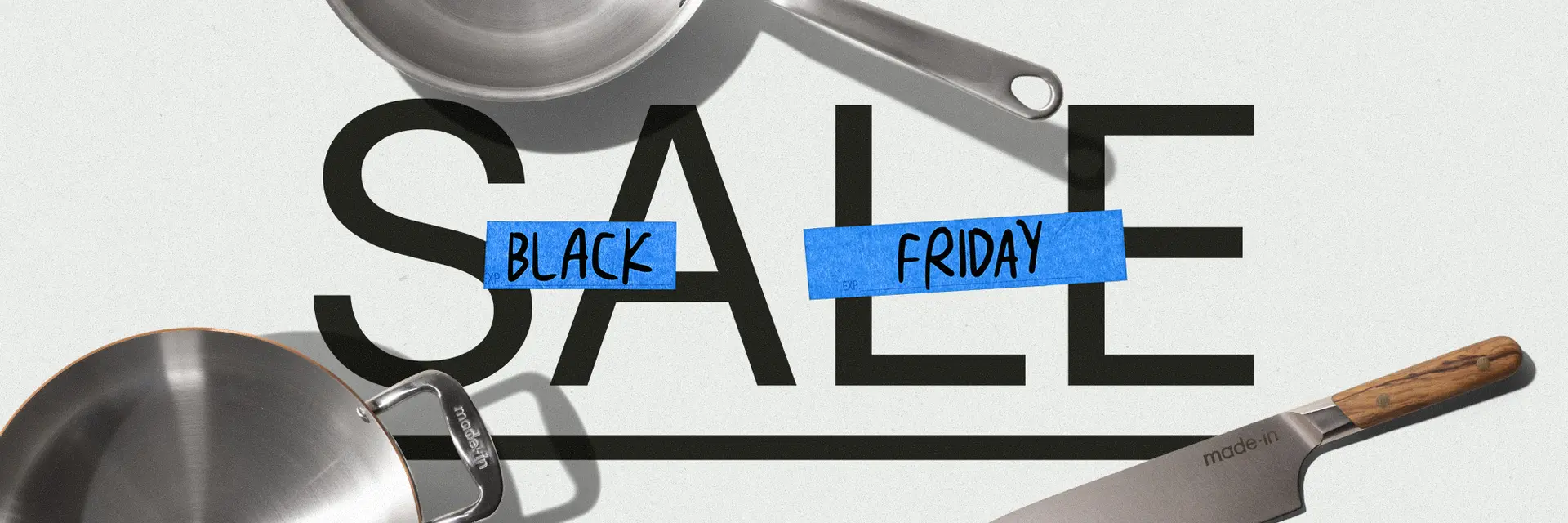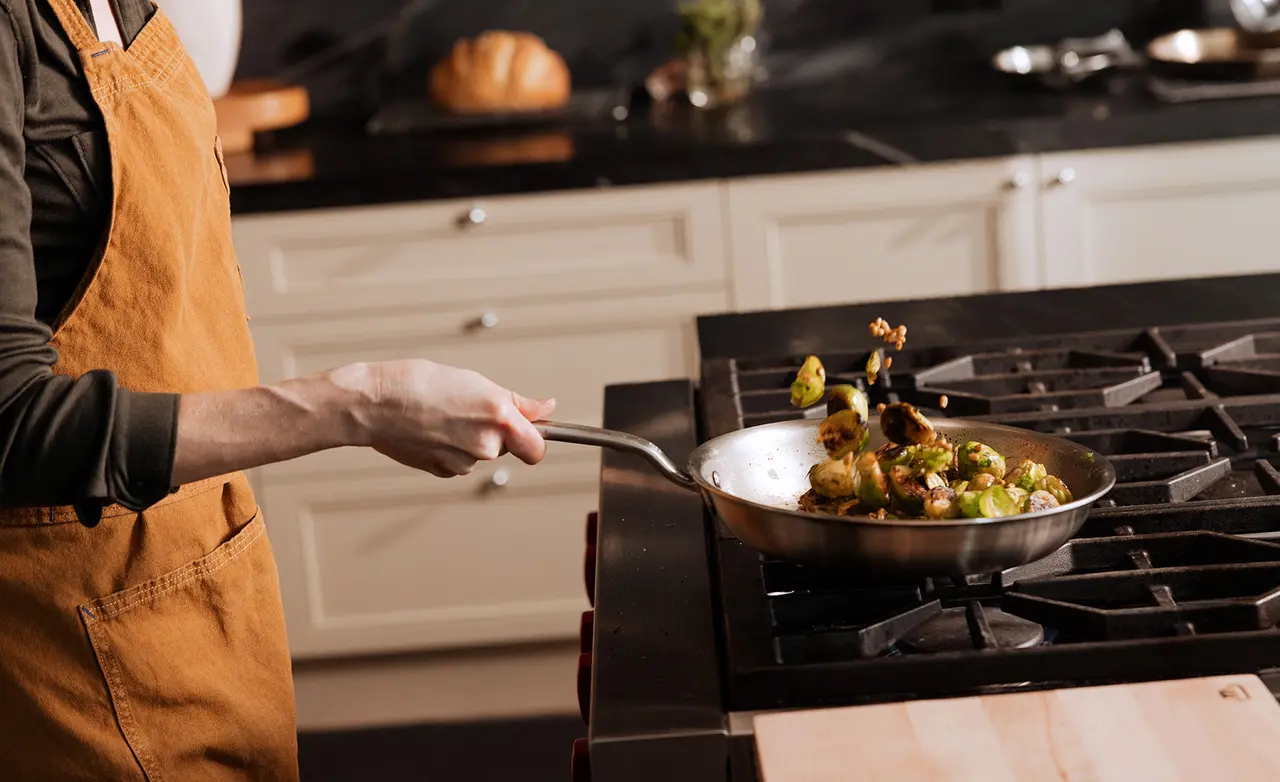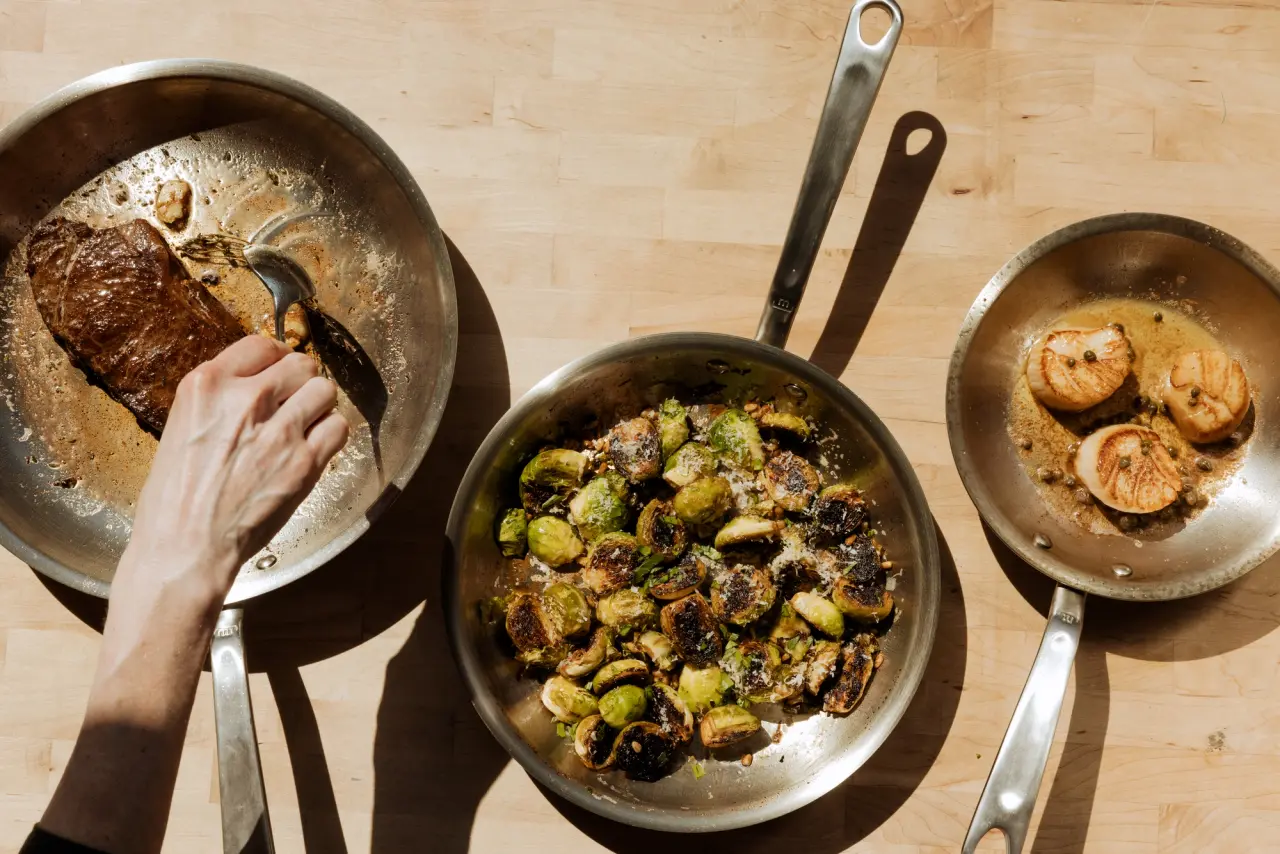We’ve still got a little over a month of summer left over, which means plenty of opportunities for cooking in the great outdoors—ideally over an open fire. If you’re already a live fire cooking fanatic, you’ve probably got a decent collection of cookware that can stand up to a roaring flame, but if not, we’re here to help.
Here’s the lowdown on our favorite rugged, high heat-resistant cookware materials, from carbon steel to cast iron. These options aren’t just high heat-resistant; they also perform beautifully, whether you’re using them on the stovetop or over a campfire.
The Importance of Quality Cookware for Open Fire Cooking
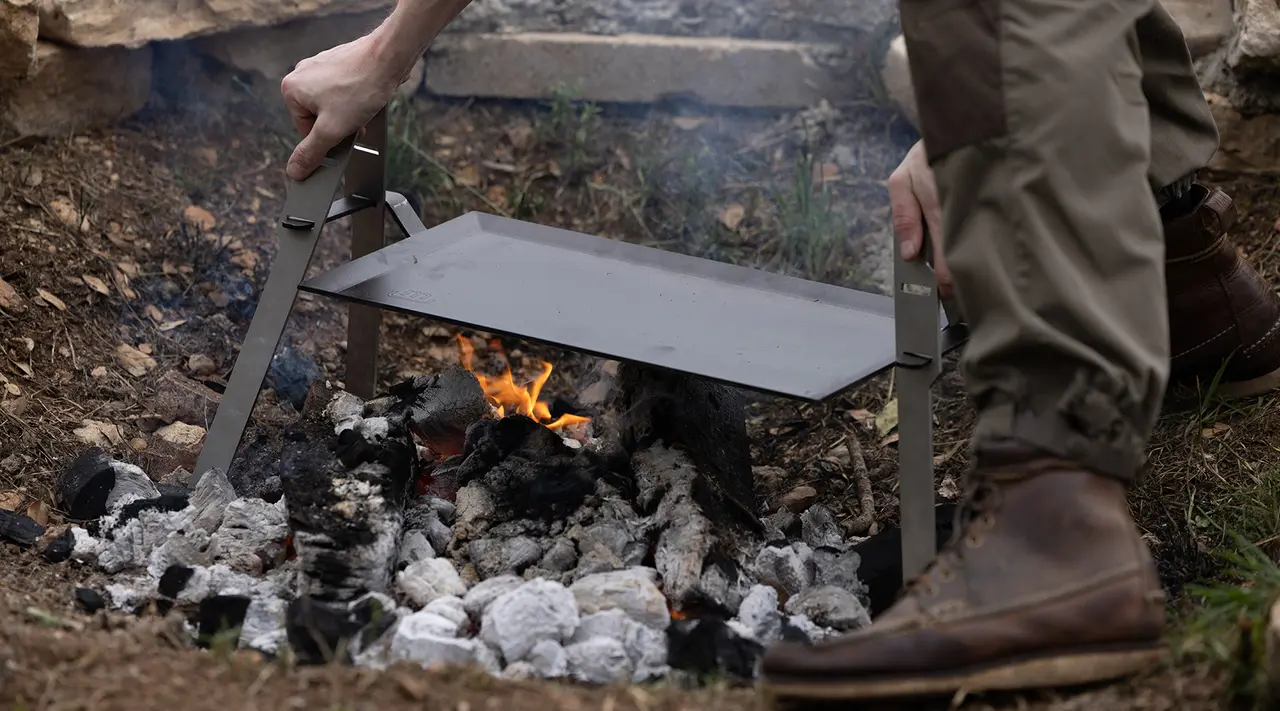
Using cheaply constructed cookware can really put a damper on your outdoor cooking adventure. Here’s how to make sure you’re properly equipped—and why it matters.
Why Quality Cookware Matters
When you’re choosing cookware for open fire cooking, heat resistance really, really matters. You’re dealing with temperatures of upwards of 1000F: you need something that can handle the heat without warping, melting, or breaking down. Delicate options like non stick and ceramic are a definite no-go, as the coating will start to break down well before your fire has reached the ideal temperature.
On top of heat resistance, a pan that’s responsive to temperature change (even outdoors) and distributes heat evenly across the bottom and sides of the pan will give you more control over your results—a particular boon when working with a heat source as unpredictable as an open fire.
Whereas a gas or electric stove or grill allows you to easily gauge and manage temperature using knobs, buttons, and/or thermometers, open fire doesn’t offer this sort of luxury—something we’ll discuss further in the following section.
Common Challenges with Open Fire Cooking
Open fire cooking is a singular—and singularly challenging—experience: once you’ve built a decent-sized fire, you’ll need to continually stoke, add tinder to, and rearrange the logs or coals to keep it from dying down too much or becoming unmanageable. Unlike a stovetop, which tends to heat relatively evenly, a fire is a different story: you’ll need to move and reposition your cookware and check in on it frequently to make sure your food isn’t burning, or that certain items aren’t cooking much faster or slower than others.
While having a strong working knowledge of open fire cooking is extremely helpful, you can also make your life easier by using the right cookware. A material like cast iron, for example, offers stellar heat retention, mitigating some of that unevenness and keeping your chili bubbling away even when the flame dies down a little.
Of course, if you’re traveling a long distance by foot, you’ll want to keep the weight and overall portability of your cookware in mind. Carbon steel and stainless steel are excellent alternatives to cast iron, which can be quite heavy—and while they don’t have the same level of heat retention as cast iron, they more than make up for it with their even heat distribution and responsiveness.
What to Look for in Cookware for Open Fire Use
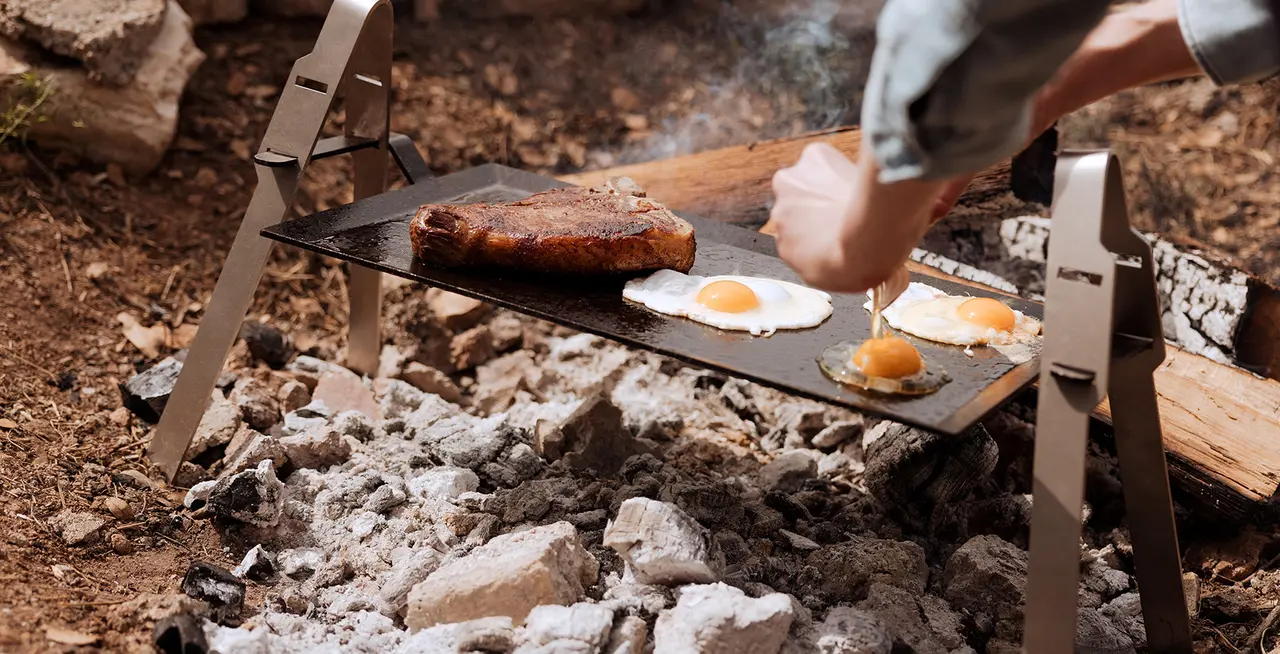
You don’t need specialized cookware for open fire cooking: just make sure your pot or pan offers the right mix of features for safety, performance, and durability.
Material
Carbon steel and unfinished cast iron are two of the best materials for open fire cooking: they’re both durable, can stand high temperatures without warping or cracking, and can be pretty much endlessly stripped down and reseasoned if they get dirty.
Stainless steel is another good option, offering fantastic heat distribution and responsiveness. That said, keep in mind that stainless steel typically has a lower maximum temperature than the first two, making it more prone to warping or discoloration if it gets too hot—for example, our Stainless Clad is oven-safe to 800F, while our Carbon Steel is safe up to 1200F.
Design and Functionality
While live fire cooking can be pretty basic (especially if you’re imagining marshmallows or hot dogs on sticks), it can also be elevated by using quality cookware. Pots and pans with tight-fitting lids, ergonomically-designed handles, and design features like a perforated bottom for flame-kissed flavor (like our Carbon Steel Grill Frying Pan) or flared edges (like our Carbon Steel Griddle) can make cooking open fire cooking easier, safer, and more enjoyable.
We also prefer multi-use pots and pans like a griddle or Dutch oven, both of which can help streamline your cooking and cut down on extra cargo.
Portability and Storage
Speaking of: while your cookware’s portability doesn’t really impact how well it performs, it can make your life a lot easier. Opting for more lightweight cookware options like a carbon steel griddle over a cast iron one, for example, will reduce your overall load by a couple of pounds, which can make a significant difference if you’re camping or hiking. You can also opt for nesting or stacking cookware sets to free up a bit of extra space.
Top Picks for the Best Cookware for Open Fire
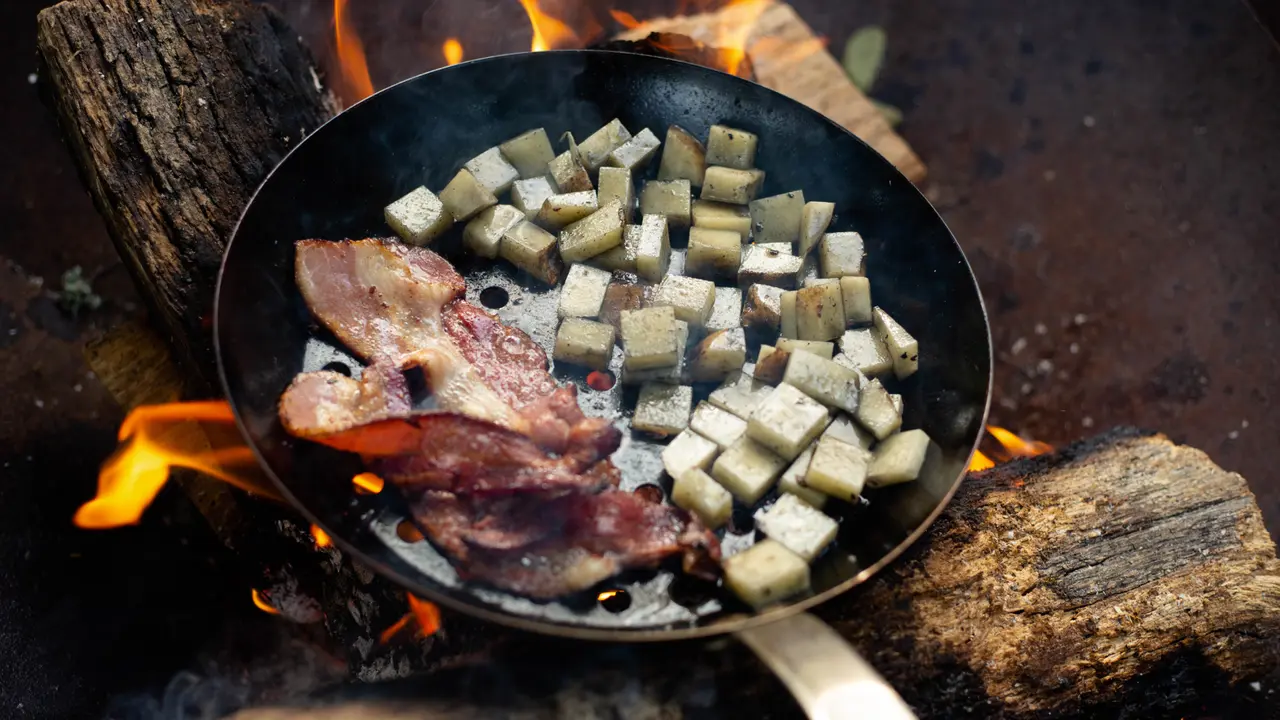
Our favorite open fire cookware can handle the heat, making for deep, savory sears, perfect charring, and more.
Carbon Steel Cookware
Carbon steel is our number one pick for cooking over a direct flame. Not only is it lightweight and naturally non stick, but it’s also got the highest heat threshold of all our cookware options, tolerating temperatures of up to 1200F—ideal for open fire cooking.
Another reason carbon steel works so well over a campfire or fire pit? It’s extremely responsive—which means that you can quickly take it off the coals or remove it from the flames if you need to cut the heat, and it’ll respond in kind. This is extra useful when you’re dealing with a heat source as unpredictable as live fire, and gives you a little more flexibility in what you’re able to cook: it’s much easier to produce flaky, tender whole fish or perfect medium-rare steak, for example, with a more responsive pan.
Whether you use the Carbon Steel Griddle, Grill Frying Pan, or the classic Frying Pan, you can't go wrong with cookware designed for high heat.
Cast Iron Cookware
Nothing quite evokes the rugged, outdoorsy vibes of live fire cooking like a heavy cast iron pot suspended over a roaring flame, ideally filled with bubbling hot chili. Like carbon steel, non-enameled cast iron cookware stands up to very high heat (often up to 900F, depending on the brand) like a champ. We love the deep sears and robust, savory brown crusts cast iron can achieve, plus—like we mentioned earlier—the fact that it can stay hot for long periods of time.
Stainless Steel Cookware
Stainless steel packs a ton of searing power into a conveniently lightweight package, making it easy to transport from home to campsite or fire pit. Fully-clad stainless steel in particular does a great job of distributing heat, so you have a bit more control over the doneness of your steaks, brats, and burgers.
It’s also rugged enough to stand up to high heat—though not quite as much as cast iron and carbon steel. We’d recommend using a grill stand to keep it suspended over the fire, rather than placing it directly onto the flames.
Tips for Using Cookware Over Open Fire
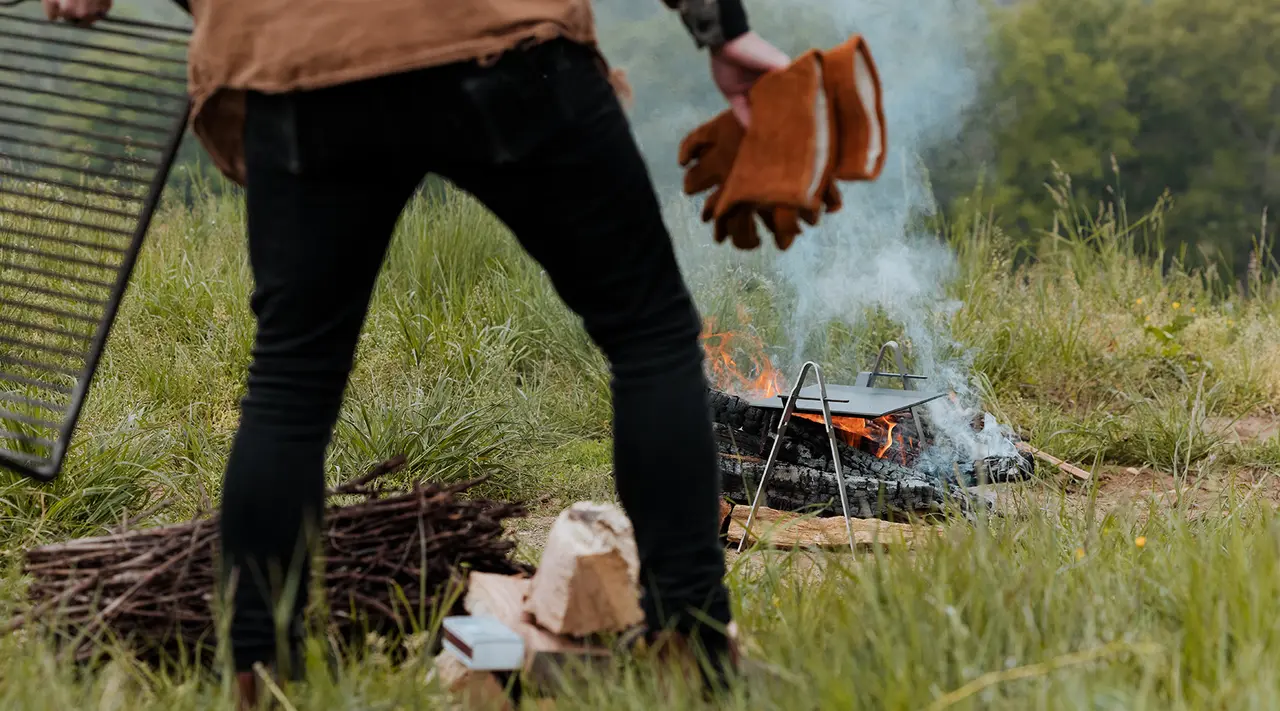
Cooking over an open fire is a little chaotic compared to cooking on your stovetop—and while this is part of the fun, there are a few easy ways to harness that chaos.
Prepping Your Cookware
First off: make sure your cookware is squeaky clean and free of grease, stuck-on food residue, and any residual soot from previous uses. These can cause flare ups and thick smoke, in addition to making your cookware harder to clean later on.
Second: have a good pair of grilling tongs at the ready, as well as grill-safe oven mitts, and/or something like a pigtail turner for hooking and turning large pieces of meat. The right tools keep your hands and arms safely away from the fire, and make it much easier to flip, turn, and adjust your food while it’s cooking. It goes without saying, but make sure to exercise proper fire safety as well.
Cooking Techniques
With the right tools and a bit of advance prep, you can cook practically anything over an open fire—even pancakes and eggs. Since you won’t have the luxury of a kitchen counter or all of your appliances at your fingertips, however, getting some of the components ready ahead of time can really make your life easier. This can mean chopping herbs for mise en place, pureeing sauces, and/or marinating your proteins.
To truly harness the intense, smoky heat of a live flame, we strongly recommend trying dishes like these charred steak sandwiches, seafood-based recipes like paella and oysters, and robust, slow-cooked chilis and stews. And if you’re still new to outdoor cooking, we’ve got a dedicated guide to help get you started.
Ready to Cook?
Whether you’re a rugged mountaineer or just a part-time camper, open fire cooking is for everyone—and everyone deserves the right cookware to do it with. Before you hit the road (or trail), make sure to check out our Summer Collection: we’ve got just about everything you need for cooking and serving your favorite flame-kissed entrees, desserts, and more.
